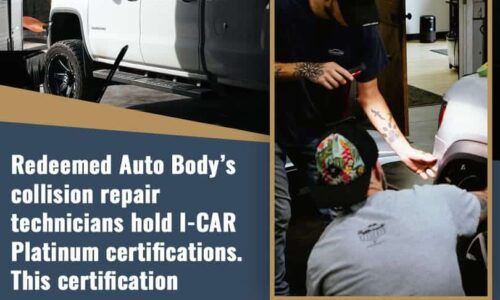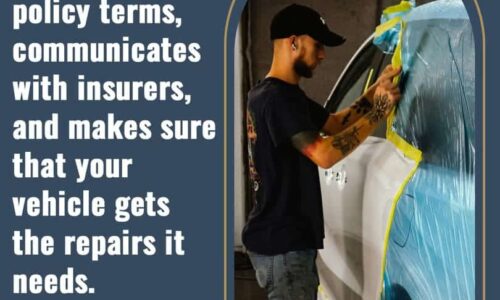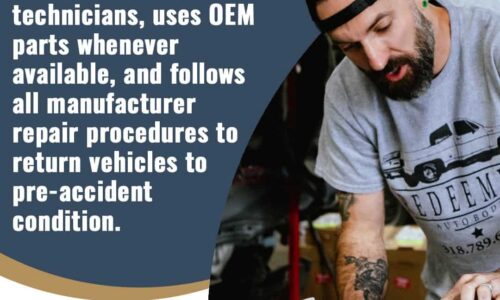The battle of trust and doing what’s right

Who’s Right? The Body Shop or the Insurance Adjuster?
When it comes to repairing a vehicle after an accident, there’s often a critical question at the center of disagreements between body shops and insurance adjusters: Should repairs follow the vehicle manufacturer’s procedures, or are an adjuster’s training and experience sufficient to determine the correct course of action? Let’s dive into this topic and uncover why the manufacturer’s guidelines are the ultimate standard.
The Golden Standard of Collision Repair
The correct way to repair a vehicle—the golden standard of collision repair—is to adhere to the guidelines set forth by the vehicle manufacturer and paint manufacturers. These guidelines are not suggestions; they are carefully engineered protocols designed to ensure that your vehicle functions safely and looks its best after repairs.
Why isn’t experience enough? Experience and training are invaluable for skilled workers, but they cannot override the repair instructions created by the people who designed and built the vehicle. For example, if a technician decides to weld a panel differently than what the manufacturer specifies, even if it looks and functions well, it’s still wrong. Why? Because the vehicle’s engineers have meticulously designed specific weld patterns and methods to ensure the car’s structural integrity in the event of another accident.
When a repair doesn’t follow these specifications, it creates serious liabilities:
For the shop: The repair is substandard and legally indefensible.
For the vehicle owner: Incorrect repairs compromise safety and could lead to injuries in a future collision.
Paint Repairs: Cosmetic vs. Safety Concerns
Even on the cosmetic side, cutting corners can lead to significant problems. For example, failing to extend the clear coat to the nearest edge or breakpoint often leaves visible tape lines or hazy edges. While these defects may seem minor, they can reduce the resale value of your vehicle, as savvy buyers or dealers will spot them immediately.
Paint issues also intersect with modern vehicle safety systems. Many cars today have advanced sensors integrated into painted parts like bumpers. Adding too much paint or failing to follow manufacturer guidelines can interfere with these sensors, leading to malfunctions. Imagine a sensor failing to detect an object or vehicle because of improper paintwork. Such mistakes can cause avoidable accidents, turning a seemingly minor cosmetic issue into a major safety concern.
Insurance Adjusters vs. Manufacturer Guidelines
Here’s a fact that might surprise you: insurance companies do not rely on vehicle manufacturer repair guidelines when determining payouts for claims. Instead, adjusters often base their decisions on their own training and certifications—not the manufacturer’s specifications.
When a body shop references manufacturer guidelines, adjusters may dismiss them with statements like:
“I’ve been in this industry for decades and have never seen a shop ask for that.”
“That’s not necessary; I’ve never heard of it before.”
This resistance often stems from company policies, cost-containment measures, and a lack of access to or understanding of manufacturer repair procedures. In some cases, it’s what I call intentional incompetence: the adjuster’s training is limited, and they’re incentivized to deny legitimate repair needs to save money for their employer.
The Battle for the Customer’s Trust
Insurance companies invest heavily in psychological strategies to influence vehicle owners. They’ve mastered techniques to plant doubt in customers’ minds about the necessity of proper repairs. Here’s how:
Shared Lack of Repair Knowledge: Most vehicle owners and insurance adjusters lack in-depth knowledge of collision repair. When an adjuster says, “This doesn’t need to be done,” it’s easy for a customer to believe them simply because they don’t know any better.
Body Shop Stereotypes: Many people view body shops as untrustworthy or prone to overcharging. Insurance companies exploit this perception to position themselves as the customer’s ally.
Divide and Conquer: Even when a customer initially sides with the body shop, adjusters can swoop in with persuasive arguments and erode that trust. Phrases like, “No other shop does this” or “They’re just trying to get more money from you” are common tactics used to sway customers.
Why It Matters: Your Safety and Investment
Ultimately, the debate between body shops and insurance adjusters isn’t just about money—it’s about safety and protecting your investment. Louisiana law gives you the right to choose your repair shop and demand repairs that meet the manufacturer’s standards. Don’t let insurance companies cut corners at the expense of your safety or your vehicle’s value.
At Redeemed Auto Body, we follow manufacturer repair procedures and paint guidelines to ensure that every repair meets the highest standards. It’s not just about doing the job—it’s about doing it right. If you’ve been in an accident and need advice, we’re here to help you navigate the process and get your vehicle back to pre-loss condition.



